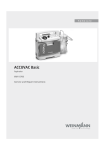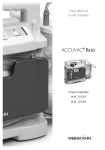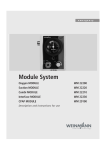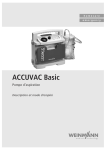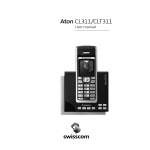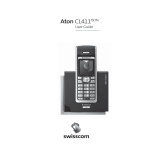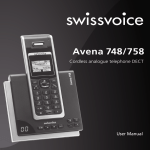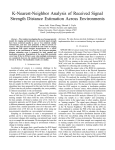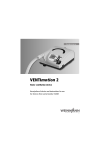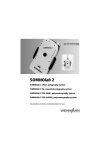Download - Frank`s Hospital Workshop
Transcript
Description and Operating Instructions ACCUVAC Basic Aspirator WM 10700 WM 10709 Contents 1. Description . . . . . . . . . . . . . . . . . . . . 2 1.1 Purpose . . . . . . . . . . . . . . . . 2 1.2 Function . . . . . . . . . . . . . . . . 3 2. Safety . . . . . . . . . . . . . . . . . . . . . . . 5 2.1 Special symbols on the appliance . . . . . . . . . . . . . . . 5 2.2 Safety rules . . . . . . . . . . . . . . 5 3. Assembly . . . . . . . . . . . . . . . . . . . . . 8 3.1 Assembly with wall bracket . . . 8 3.2 Fitting a re-usable collection canister . . . . . . . . . . . . . . . 10 3.3 Fitting an accessory bag . . . . 11 3.4 Fitting a rinsing glass . . . . . . 11 4. Operation . . . . . . . . . . . . . . . . . . . 13 4.1 Preparing for aspiration . . . . . 13 4.2 Aspiration . . . . . . . . . . . . . . 14 4.3 After aspiration . . . . . . . . . . 16 4.4 Charging ACCUVAC Basic . . 16 5. Hygienic preparation . . . . . . . . . . .19 5.1 Preparations . . . . . . . . . . . . . 19 5.2 Cleaning, disinfecting and sterilizing . . . . . . . . . . . . . . . 20 5.3 Reassembling the disposable collection canister . . . . . . . . . 22 6. Functional check . . . . . . . . . . . . . . .23 6.1 Intervals . . . . . . . . . . . . . . . . 23 6.2 Performing the functional check 25 7. Troubleshooting . . . . . . . . . . . . . . .26 7.1 Power pack . . . . . . . . . . . . . 27 7.2 Changing fuses . . . . . . . . . . 29 7.3 Changing the muffler . . . . . . . 31 8. Maintenance . . . . . . . . . . . . . . . . .32 8.1 Intervals . . . . . . . . . . . . . . . . 32 8.2 Disposal . . . . . . . . . . . . . . . 32 9. Product and accessories . . . . . . . . .33 9.1 Standard product . . . . . . . . . 33 9.2 Accessories . . . . . . . . . . . . . 34 9.3 Spare parts . . . . . . . . . . . . . 36 10. Technical Data . . . . . . . . . . . . . . . .37 10.1 Safe distances . . . . . . . . . . . 38 11. Warranty . . . . . . . . . . . . . . . . . . . .39 ACCUVAC Basic from front with disposable collection canister 5 Membrane keyboard 6 Release catch 7 Disposable canister -0,6 -0,4 -0,8 -1,0 -0,2 0 2 Vacuum control 4 On/Off switch 1 Pressure gage 3 Voltage indicator 9 Tube holder plate 8 Motor unit ACCUVAC Basic from rear without collection canister 14 Suction port 13 Muffler (hidden) 12 Power socket (hidden) 11 Adapter/charger plug 10 Loops for accessory bag ACCUVAC Basic interior Disposable collection canister 15 Fuse F116 Fuse F2 (hidden) 19 Aspiration tube with fingertip 20 Intermediate tube 21 Disposable bag 22 Vacuum tube 23 T-piece 24 Collection canister 18 Plug X1 17 Power pack 11 Adapter/charger plug 25 Holder Accessories 26 Re-usable collection canister WM 15269 27 Vent tab 28 Filter cover 29 Bacteria filter 30 Locking tab 31 Bracing 32 Secretion cover 33 Ball (overfill guard) 34 Sealing ring Accessory bag WM 10655 Wall bracket WM 15208 35 Fingertip 36 Aspiration tube 37 Collection canister 13 ,8 38 Holder set WM 15271 V Mains / charger unit WM 2645 Connection cable WM 10650 1. Description 1.1 Purpose ACCUVAC Basic is a mobile and portable electrically powered aspirator (suction pump). It is used for: • aspirating accumulations of blood, secretions and food from the oral cavity, the nose and throat region and the bronchial system; • deflating vacuum matresses and inflatable splints. ACCUVAC Basic: • can when used by a skilled operator eliminate obstruction of the respiratory tract and hence the risk of respiratory failure; • cuts energy consumption by reducing power output on reaching the necessary vacuum; • can optionally be powered by a rechargeable internal power pack; • or by an external DC source supplying 12.0 13.8 V; • is also suitable for use in wards. ACCUVAC Basic must not be used: 2 Description • in medical rooms where potential equalization is necessary (e.g. heart surgery); • in explosion-risk areas. 1.2 Function An electrically operated diaphragm pump generates the vacuum necessary for aspiration. -0,6 -0,4 -0,2 -0,8 -1,0 0 Use the vacuum control 2 to set the desired vacuum, which is continuously variable between –0.05 bar and –0.8 bar. You can read off the set value on the pressure gage 1. The aspirated material passes via the aspiration tube 19 into the disposable collection canister 7. Disposable collection canister The disposable collection canister 7 consists of the collection canister 24 itself, the disposable collection bag 21, the aspiration tube with fingertip 19, the intermediate tube 20, the T-piece 23 and the vacuum tube 22. The disposable collection canister 7 is inserted in the holder 25 screwed on the side of the motor unit 8. The vacuum tube 22 of the disposable canister 24 is pushed onto the suction port 14 of the motor unit 8. The aspirated material passes through the aspiration tube 19 into the disposable collection bag 21. The disposable collection bag is intended for once-only use. When it is full, you can remove it from the collection canister 24 and dispose of it complete with contents. An overflow valve filter is integrated in the disposable collection bag 21. This prevents secretions and liquid from finding their way into the motor unit 8 and passing into the environment via the muffler 13. Description 3 Power supply Power for operating the appliance and charging the power pack can be drawn: Important • from the built-in power pack 17. • from a 12-volt electrical cable system, using the connecting cable WM 10650 which is available as an accessory. • from the mains and charger unit WM 2645 which is available as an accessory. The AC adapter/charger plug 11 supplied with the appliance is only designed for charging the power pack with the appliance switched off. It must not be used to operate the appliance itself, as this will overload it and cause it to overheat. The voltage indicator 3 shows the charge status of the power pack. Charging of the power pack starts automatically as soon as the appliance is switched off and connected to an external power supply (see “10. Technical Data” on page 37). 4 Description 2. Safety 2.1 Special symbols on the appliance Rating plate ACCUVAC Basic Do not dispose of the unit in domestic waste! Protection class BF Protection class II, safety insulation Year of manufacture 2.2 Safety rules For your own safety and the safety of your patients, and in accordance with the requirements of the 93/42/EEC, we would draw your attention to the following points: • Please read these operating instructions carefully. They belong to the appliance and must be kept available at all times. • Before working with ACCUVAC Basic, you must understand how to use it. • Be sure to observe these operating instructions when working with ACCUVAC Basic. Safety 5 • To avoid infection or contamination with bacteria please read section “5. Hygienic preparation” on page 19. • ACCUVAC Basic may only be used by trained staff instructed in aspiration techniques. Incorrect use can cause serious bodily harm. • ACCUVAC Basic must be used for the designated purpose only (see “1.1 Purpose” on page 2). • Maintenance operations such as inspection and repair work must be performed by expert personnel or by the manufacturer Weinmann. • Malfunctions and a lack of biocompatibility may result if third-party articles are used. Please bear in mind that in these cases any warranty entitlement and liability shall lapse where the accessories recommended in the instructions for use or original spare parts are not utilised. • During the aspiration process, take particular care not to cause injuries to the patient’s mouth or throat, e.g. to mucous membrane. The suction can be interrupted by briefly opening the fingertip, for example if the nozzle becomes firmly attached to the skin. Important! 6 Safety • Ensure sterile conditions during bronchial aspiration, and always use sterile catheters. • The disposal of liquids such as blood and secretions and any items contaminated with such liquids should be carried out according to the national guidelines for hygiene. • The ACCUVAC Basic should only be operated in the upright position, in order to prevent liquid from wetting the overflow valve filter integrated in the disposable collection bag 21. If this happens, the overflow valve filter becomes impermeable to air and the disposable collection bag 21 has to be changed. • The AC adapter/charger plug supplied is only for recharging the power pack when the appliance is switched off. It must not be used for operating the appliance itself, as this will overload it and cause it to overheat. • To extend its service life, the power pack 17 must not be allowed to become fully discharged. If the red charge control LED 3 lights up, it is time to recharge immediately. • To eliminate the risk of fully discharging the power pack, ACCUVAC Basic must never be stored in an uncharged condition. Always recharge the power pack first as described in “4.4 Charging ACCUVAC Basic” on page 16. • Lead cell power packs discharge even during nonuse. The rate of auto-discharge increases with rising temperature and amounts to about 20 % after three months’ non-use at 20 °C. For this reason be sure to carry out functional checks at the specified intervals (see “6. Functional check” on page 23). • Never sterilize the motor unit 8 in an autoclave. • Never dip the motor unit 8 in disinfectant solution. • We recommend keeping alternative means of aspiration ready in case of appliance failure. • Do not use mobile telefones right beside ACCUVAC Basic. ACCUVAC Basic can however be operated without any problem in the back of an ambulance even if a mobile telephone is being used in the cab. Safety 7 3. Assembly ACCUVAC Basic is supplied ready for use. Important Before using ACCUVAC Basic for the first time, fully charge the power pack (see “4.4 Charging ACCUVAC Basic” on page 16). 3.1 Assembly with wall bracket To mount ACCUVAC Basic on a wall, use wall bracket WM 15208, available as an accessory. 115 mm 110 mm ˘ 3 mm 1. Find a suitable mounting location on an even, vertical surface. The outline of the ACCUVAC on the drilling template shows the space required. 2. Hold up the drilling template and level it with a spirit level. 3. Mark the required screw holes on the mounting location. 4. Drill the screw holes with a Ø 3 mm drill. 5. Screw the wall bracket on with the screws supplied. 6. Push the appliance plug 11 of the connection cable or of the mains/charger unit into the guide rail of the wall bracket until it engages with the tongue. Important: the mounting substrate must be suffi- ciently strong to hold the wall bracket and the ACCUVAC securely in accordance with CEN 1789 Medical Vehicles and their Equipment - Road Ambulances. 8 Assembly As an alternative to the AC adapter/charger plug supplied with the appliance, you can also use the connecting cable WM 10650 available as an accessory. 7. Insert the AC adapter/charger plug in a 230 V/ 50 Hz power socket, or if using the connecting cable, insert the vehicle plug into a 12 volt DC power source. The vehicle plug is supplied complete with a red adapter ring. This is needed if you want to plug the vehicle plug into a cigarette lighter socket. To connect to the mains/charger unit WM 2645 (accessory) or a 12 volt vehicle socket, remove the red adapter ring. 8. Slide ACCUVAC Basic downwards into the wall bracket. If ACCUVAC Basic appliance is switched off, it will automatically be charged up from the DC power source. 9. To remove the ACCUVAC Basic from the bracket ready for use, press the release catch 6 and lift ACCUVAC Basic out of the wall bracket. Assembly 9 3.2 Fitting a re-usable collection canister Instead of the disposable collection canister 7 supplied as standard, you can also fit a sterilizable re-usable collection canister 26 with holder 38, available as an accessory. This conversion kit is available under order number WM 15261. 1. Remove the disposable collection canister 7 from its holder 25. 2. Unscrew the holder 25 from the motor unit 8. 3. In the same place, screw on the holder 38 for the re-usable collection canister 26. 4. Push the re-usable collection canister 26 into the holder 38. Since the collection canister is directly connected to the suction port 14 of the motor unit 8, there is no need for an intermediate tube. 10 Assembly 3.3 Fitting an accessory bag The accessory bag WM 10655 is available as an optional extra. It is used to hold aspiration catheters and other small parts. The accessory bag cannot be fitted at the same time as a rinsing glass (see “3.4 Fitting a rinsing glass” on page 11). 1. Use the velcro-type strips to attach the accessory bag to the loops on the motor unit. 3.4 Fitting a rinsing glass On the left side of the appliance it is possible to fit an additional collection canister in the form of a rinsing glass for holding a rinsing liquid, e.g. water. The rinsing glass kit WM 15229 consists of: • Collection canister 37 WM 10631 • Holder set 38 WM 15271 1. Use a pointed object to pierce the two closed drill holes on the left of the appliance case. Assembly 11 2. Fix the holder 38 to the left side of the appliance. 3. Push the rinsing glass into the holder. 12 Assembly 4. Operation 4.1 Preparing for aspiration 1. Unwind the aspiration tube 19 from the tube holder plate 9. Fingertip Catheter Aspirator tube 2. If necessary, adapt an aspiration catheter of suitable size for tracheal or nasopharyngeal aspiration to fit the nozzle. Nozzle 3. Press the button marked O / I . The lower green LED for the power indicator and the green LED for the O / I button lights up. Do not switch on ACCUVAC Basic while there is still a vacuum. This would cause the pump motor to draw too much current when switching on, which could actuate fuse F2 16. 4. Set the desired vacuum at the vacuum control 2. -0,6 -0,4 -0,2 -0,8 -1,0 0 For this purpose, close the fingertip with the stopper and the suction opening with your thumb. Wait until the pressure gage 1 shows a constant vacuum. Now use the vacuum control 2 to set the desired vacuum. ACCUVAC Basic is now ready for operation, and you can start aspiration. Operation 13 4.2 Aspiration During the aspiration process, take care not to cause any injury to the patient’s mouth and throat region, and especially to mucous membrane. • The fingertip can be opened to interrupt suction briefly, e.g. if the nozzle is clinging to the skin. You can leave the fingertip open all the time and keep your thumb over it. To release the suction all you have to do is lift your thumb. Important Make sure that ACCUVAC Basic is always upright during operation so that the overflow valve filter integrated in the disposable collection bag 21 is not wetted by secretion. If the overflow valve filter is wetted with secretion, it becomes impermeable and the disposable collection bag 21 has to be replaced. During aspiration, keep an eye on the fluid level in the disposable collection bag 21 and replace it with a new one in good time. Important 14 Operation Be sure to check the power pack charge level at regular intervals during aspiration. If the red LED on the voltage indicator 3 lights up, aspiration should be continued with a second appliance. Using the appliance beyond this point can damage the power pack by discharging it completely, with the result that its full capacity will no longer be available. Disposal of disposable collection bag 1. Pull the end of the aspiration tube with fingertip 19 off the port. 2. Detach the intermediate tube 20 from the T-piece 23 of the collection canister 24. 3. Push the free end of the intermediate tube 20 onto the connection for the aspiration tube. This closes the disposable collection bag 21 and reduces the risk of fluid escaping. 4. Remove the disposable collection bag 21 and dispose of it together with the aspiration tube 19. Important Be sure to observe the relevant rules for disposal (see “2. Safety” on page 5). Operation 15 4.3 After aspiration After aspiration: 1. Switch off ACCUVAC Basic by pressing the button marked O/I. 2. Fit a new disposable collection bag 21 (see “ Disposal of disposable collection bag” on page 15). 3. Clean ACCUVAC Basic (see “5. Hygienic preparation” on page 19). 4.4 Charging ACCUVAC Basic We recommend you to charge ACCUVAC Basic as soon as the yellow voltage indicator LED lights up. By doing so you will ensure that it operates for an adequate period next time it is used. The power supply for charging must deliver 12.0 V – 13.8 V DC and at least 0.3 ampere. A full charge takes a maximum of 14 hours. The following sources can be used for charging: 16 Operation • The AC adapter/charger plug 11 supplied. • The 12-volt vehicle electrical system with the aid of the accessory connecting cable WM 10650. • The mains/charger unit WM 2645 available as an accessory. – + A red adapter ring is fitted to the vehicle connector. This is needed if you want to insert the vehicle connector in a cigarette lighter socket. To connect to the mains/charger unit WM 2645 (accessory) or a 12-volt vehicle socket, you must remove the red adapter ring. Caution: Check the vehicle plug for correct polarity. Reversed polarity can damage ACCUVAC Basic. Charging without wall bracket 1. Switch off ACCUVAC Basic. 2. Place the plug 11 at the appliance end of the connecting cable in the guide slot at the rear of the appliance and push it up behind the cover plate. 3. Switch on the power supply. 4. Charging starts as soon as you have switched on the power supply. When the top LED lights up, the power pack is approx. 75 % charged. Please charge the battery for another two 2 hours at least. Charging with wall bracket 1. Switch off ACCUVAC Basic. 2. Insert ACCUVAC Basic in the wall bracket. Operation 17 3. Charging starts as soon as you switch on the current. When the top LED lights up, the power pack is approx. 75 % charged. Please charge the battery for another two 2 hours at least. Refresher charging Regular refresher charging extends the service life of the power pack. Leave ACCUVAC Basic connected to the external power supply even after the power pack is fully charged. This cannot overcharge the power pack provided the charging voltage is kept within the range 12.0 – 13.8 V. 18 Operation 5. Hygienic preparation Hygienic preparation of ACCUVAC Basic and the accessories used must be carried out daily during use and before every change of patient. Observe the instructions for the disinfectant used. We recommend GIGASEPT FF for immersion disinfection and TERRALIN for wipe disinfection. Never immerse the ACCUVAC Basic motor unit in disinfectant or other liquids. Always disinfect simply by wiping with disinfectant. Otherwise you may damage the device and thereby endanger users and patients (see “5.2 Cleaning, disinfecting and sterilizing” on page 20). Be sure to carry out a functional check after every hygienic preparation (see “6.2 Performing the functional check” on page 25). 5.1 Preparations 1. Pull off the aspiration tube 19. 2. Remove the intermediate tube 20 from the T-piece 23 of the collection canister 24. Hygienic preparation 19 3. Push the free end of the intermediate tube 20 onto the aspiration tube port 19. This closes the disposable collection bag 21 and thereby reduces the risk of secretion escaping. 4. Remove the disposable collection bag 21 and dispose of it together with the aspiration tube 19. Important Be sure to observe the relevant rules when disposing of the collection bag (see “2. Safety” on page 5). 5. Remove the vacuum tube 22. 6. Lift the disposable canister 7 from its holder 25. 7. Remove the tube holder plate 9 by pushing it to the left until it disengages and then pulling it towards you. 5.2 Cleaning, disinfecting and sterilizing Hygienic preparation of the ACCUVAC Basic and the accessories used should be performed as described in the following table. Observe the instructions regarding use of disinfectant. For immersion disinfection we recommend GIGASEPT FF and TERRALIN for wipe disinfection. 20 Hygienic preparation You are recommended to wear suitable gloves (e.g. household or disposable gloves) during disinfection procedures. Disposable collection canister Part Cleaning Collection canister In warm water with mild household cleaner Vacuum tube Aspiration tube with fingertip Disinfecting Immerse in dilute solution (3) Rinse in washing machine Rinse at up to 95 °C Sterilization Hot steam sterilization up to 121 °C (4) Not permitted Disposable item, re-use not permitted. Use new part for every patient Re-usable collection canister Collection canister Secretion cover Overfill ball Filter cover In warm water with mild household cleaner Immerse in dilute solution (3) Rinse at up to 95 °C Hot steam sterilization up to 134 °C (5) Aspiration tube Filter (1) In clear warm water (2) Hot steam sterilization up to 134 °C Not permitted (2) (5) Nozzle with fingertip Motor unit Tube holder plate Accessory bag Disposable item, re-use not permitted. Use new part for every patient. Wipe with damp cloth Disinfectant wipe In warm water with mild household cleaner Immerse in dilute solution (3) Not permitted Rinse at up to 40 °C Not permitted (1) Always dry the filter before using it again. A damp filter reduces the pump’s suction capacity. (2) Do not use any surfactants or alcohol for cleaning, as they can adversely affect the hydrophobic properties of the filter. (3) After disinfection, rinse the parts thoroughly with distilled water and let them dry. (4) Sterilization with superheated steam at 121 °C in units complying with EN 285, residence time 20 minutes. (5) Sterilization with superheated steam at 134 °C in units complying with EN 285, residence time 5 minutes. Hygienic preparation 21 5.3 Reassembling the disposable collection canister After cleaning, disinfection or sterilization, reassemble the parts as follows: 1. Refit tube holder plate 9 by sliding it to the right. 2. Insert the collection canister 7 in its holder 25. 3. Use the vacuum tube 22 to connect the T-piece of the collection canister 24 to the suction port 14 on the motor unit 8. 4. Insert a new disposable collection bag 21. 5. Push the intermediate tube 20 onto the T-piece 23. 6. Push a new aspiration tube 19 onto the connection port of the disposable collection bag 21. 22 Hygienic preparation 6. Functional check If the functional check reveals defects or deviations from the specified values, ACCUVAC Basic must not be used again until the faults have been rectified. We therefore recommend that you always keep a stock of the following: • Disposable collection bag 21 WM 10732 • Aspiration tube with fingertip 19 WM 10733 6.1 Intervals To ensure that a properly functioning ACCUVAC Basic is always available, it is essential to observe the following intervals. Before every use • Perform a functional check (see “6.2 Performing the functional check” on page 25). After every use • Clean, disinfect and/or sterilize the unit and its parts (see “5. Hygienic preparation” on page 19); • Perform a functional check (see “6.2 Performing the functional check” on page 25). Functional check 23 Every 3 months • Check the charge level of the power pack 17 by switching on ACCUVAC Basic and reading the voltage indicator 3. If the top LED of the voltage indicator does not light up, the power pack should be recharged (see “4.4 Charging ACCUVAC Basic” on page 16). At least every 6 months • Perform a functional check (see “6.2 Performing the functional check” on page 25). • Make a visual inspection of the muffler for clogging. If it is clogged, fit a new muffler (see “7.3 Changing the muffler” on page 31). After all repairs 24 Functional check • Clean, disinfect and/or sterilize the unit and its parts (see “5. Hygienic preparation” on page 19); • Perform a functional check (see “6.2 Performing the functional check” on page 25). 6.2 Performing the functional check 1. Check that all tubes and the individual parts of the disposable collection canister 7 are in perfect condition. Any damaged or worn parts must be replaced. 2. Check that all tubes are securely connected and the disposable collection bag 21 is firmly installed. 3. Switch on ACCUVAC Basic. 4. Check the charge level on the voltage indicator 3. Always recharge the power pack without delay if the yellow LED on the voltage indicator lights up (see “4.4 Charging ACCUVAC Basic” on page 16). 5. Insert the stopper in the fingertip. 6. Use your thumb to hold the suction nozzle closed. 7. Switch on the aspirator and select the maximum vacuum of –0.8 bar by turning vacuum control 2 fully to the right. ACCUVAC Basic must reach this vacuum in not more than 20 seconds. If the aspirator takes more than 20 seconds to reach this vacuum, its suction capacity is reduced. Check for possible faults (see “7. Troubleshooting” on page 26). 8. Switch ACCUVAC Basic off again. Functional check 25 7. Troubleshooting Fault Cause Appliance does not start, O/I indicator and voltage Faulty pump indicator show ready for operation Remedy Have repairs carried out by factory or by expert personnel. Fuse F1 or F2 in appliance defective Fit new fuse (7.2, page 29) Appliance does not start, O/I indicator does not show ready for operation Fuse in vehicle plug defective Fit new fuse (7.2, page 29) Power pack fully discharged Perform several charge/discharge cycles. If unsuccessful, fit new power pack (7.1, page 27) Incorrect polarity of vehicle power socket Correct polarity and if necessary replace fuse F1 (7.2, page 29) Snap-in connection between circuit board and power pack not properly engaged Make sure connection snaps in Appliance does not switch Electronic fault on or off Appliance does not reach Leak in suction side of appliance maximum vacuum of –0.8 bar in 20 seconds, Power pack not sufficiently charged but voltage indicator shows ready for operation Fault in pump Not charging 26 Troubleshooting Have it repaired Check that all tubes are firmly connected and disposable bag is securely installed Charge power pack (4.4, page 16) Have repairs carried out at factory or by expert personnel. AC adapter/charger plug defective Have repairs carried out at factory or by expert personnel Inadequate external power supply External power supply must be between 12.0 and 13.8 volt. Fuse F1 or F2 defective Fit new fuse (7.2, page 29) Fuse in vehicle plug defective Fit new fuse (7.2, page 29) Snap-in connection between circuit board and power pack not properly engaged Make sure connection snaps in Fault Cause Remedy Use AC adapter/charger plug Charger does not meet specifications WM 10750 or charger WM 2645 (accessory) Power pack is not fully charged up despite Vehicle electrical system is not Check vehicle electrical system charging for 14 hours (top supplying 12.0 – 13.8 V LED in voltage indicator Power pack damaged by being fully does not light up) discharged Fit new power pack (7.1, page 27) Power pack at end of service life Top LED of voltage indicator lights up after Internal connection faulty charging, but pump does not run when powered by Fuse F2 defective power pack Fuse F2 frequently blows Check internal connection between printed circuit board (X1) and power pack Fit new fuse (7.2, page 29) Pump is often switched on under vacuum conditions Do not switch on pump under vacuum Pump defective Have repair carried out at factory or by expert personnel 7.1 Power pack ACCUVAC Basic is fitted with a high-grade lead cell power pack. Changing power pack Important Never touch the circuit board, as this can damage the electronic system. 1. Switch off ACCUVAC Basic. 2. Disconnect the aspirator from the external power supply. 3. Remove collection canister 7 and any accessories. Troubleshooting 27 4. Unscrew the holder 25 for the disposable collection canister 7. 5. Open the case by unscrewing the 6 cross-head screws. When opening the case, be careful not to damage the silicone sealing cord. 6. Carefully disconnect the power pack connector 18 (X1) from the circuit board. 7. Unscrew the power pack holder (4 cross-head screws). 8. Detach both leads from the power pack 17. 9. Remove the faulty power pack. Help protect the environment! Don’t throw the old power pack in the garbage can – take it to a local collection point for environment-friendly disposal. 10. Attach the two cables to the connections on the new power pack: red to plus; black to minus. 28 Troubleshooting If you accidentally reverse the connections, the electronic system will be protected by fuse 16 (F2), which will then have to be replaced. 11. Fit the new power pack with its holder, making sure you do not jam any cables. 12. Carefully push power pack connector X1 onto the circuit board until it snaps into place. 13. Screw the case together again, making sure that the silicone sealing cord is correctly inserted and is not jammed or otherwise damaged. 14. Perform a functional check (see “6.2 Performing the functional check” on page 25). 7.2 Changing fuses Changing fuse F1 or F2 Important Never touch the circuit board, as this can damage the electronic system. 1. Unscrew the case of ACCUVAC Basic (see “ Changing power pack” on page 27). 2. Remove the faulty fuse 15/16. The fuses are identified on the circuit board. 3. Insert a new fuse. Always use approved fuses (see “10. Technical Data” on page 37). Troubleshooting 29 4. Screw the case together again, making sure that the silicone sealing cord is correctly inserted and is not jammed or otherwise damaged. 5. Perform a functional check (see “6.2 Performing the functional check” on page 25). Changing fuse in vehicle plug 1. Use a screwdriver to open the vehicle plug. Fuse Note: The central contact of the plug is the plus pole. The plus lead of the cable has either a square crosssection or colored markings. The outer contact of the plug is the minus pole. The minus lead of the cable is round and black. Caution: Check the vehicle plug for correct polarity. Reversed polarity can damage ACCUVAC Basic. 2. Change the faulty fuse. Use only approved fuses (see “10. Technical Data” on page 37). 3. Screw the vehicle plug together again. 4. Perform a functional check (see “6.2 Performing the functional check” on page 25). 30 Troubleshooting 7.3 Changing the muffler 1. Use a screwdriver to unscrew the cover plate (2 cross-head screws). 2. Remove the old muffler 13. 3. Insert a new muffler. 4. Refit the cover plate. Make sure that the pad stuck to the cover plate is pressing against the muffler. 5. Perform a functional check (see “6.2 Performing the functional check” on page 25). Pad Troubleshooting 31 8. Maintenance 8.1 Intervals The ACCUVAC Basic requires no maintenance, but please observe the intervals specified for regular functional checks (see “6.1 Intervals” on page 23). We recommend that you have any servicing, such as inspections and repair work, carried out by the manufacturer – Weinmann – or by expert personnel. 8.2 Disposal Do not dispose of the unit with domestic waste. To dispose of the unit properly, please contact a licensed, certified electronic scrap disposal merchant. This address is available from your Environment Officer or from your local authority. 32 Maintenance 9. Product and accessories 9.1 Standard product 1. ACCUVAC Basic with disposable ACCUVAC Basic consisting of: – Aspirator unit (disposable canister) – AC adapter/charger plug, complete canister WM 10700 WM 10710 WM 10750 2. ACCUVAC Basic with re-usable canister ACCUVAC Basic WM 10709 consisting of: – Aspirator unit (re-usable canister) WM 10726 – AC adapter/charger plug, complete WM 10750 – Bacteria filter WM 10675 Product and accessories 33 9.2 Accessories The following accessories are not part of the standard product and must be ordered separately: 1. Mains/charger unit WM 2645 2. Connection cable WM 10650 3. Accessory bag WM 10655 4. Wall bracket incl. fixing kit WM 15208 5. Conversion kit to re-usable collection canister consisting of: – Set, re-usable canister – Holder set 6. Set, re-usable canister consisting of: – Re-usable canister – Instructions for use 7. Holder set for re-usable canister consisting of: – Holder – Fixing elements 8. Set, rinsing glass consisting of: – Collection canister – Holder set 9. Aspiration catheter, sterile pack CH. 05, diam. 1.3 mm – – – 34 Product and accessories Set I: 10 x WM 5154 Set II: 20 x WM 5154 Set III: 30 x WM 5154 WM 15261 WM 15269 WM 15271 WM 15269 WM 10630 WM 16235 WM 15271 WM 10640 WM 15229 WM 10631 WM 15271 WM 5154 WM 15311 WM 15312 WM 15313 10. Aspiration catheter, sterile pack CH. 06, diam. 2.0 mm, 50 cm long, pack of 2 – – – Set I: 10 x WM 5156 Set II: 20 x WM 5156 Set III: 30 x WM 5156 11. Aspiration catheter, sterile pack CH. 10, diam. 3.3 mm, 50 cm long, pack of 4 – – – Set I: 10 x WM 5158 Set II: 20 x WM 5158 Set III: 30 x WM 5158 12. Aspiration catheter, sterile pack CH. 12, diam. 4.0 mm – – – Set I: 10 x WM 5159 Set II: 20 x WM 5159 Set III: 30 x WM 5159 WM 5155 WM 15314 WM 15315 WM 15316 WM 5157 WM 15317 WM 15318 WM 15319 WM 5159 WM 15296 WM 15297 WM 15298 Product and accessories 35 9.3 Spare parts 36 Product and accessories 1. Disposable collection canister consisting of: – Collection canister – Disposable collection bag – T-piece – Aspiration tube with fingertip – Vacuum tube 2. Holder set for disposable collection canister consisting of: – Holder – Fixing elements 3. Reset button set, green 4. Tube holder plate, green 5. Lead cell power pack 6. Muffler 7. Instructions for use 8. Fuse for vehicle plug 9. Fuse for external power supply (F1) WM 10730 10. Fuse for power pack (F2) WM 2692 11. Set I, disposable collection bags (10 x WM 10732) 12. Set II, disposable collection bags (20 x WM 10732) 13. Set III, disposable collection bags (50 x WM 10732) 14. Set I, aspiration tube with fingertip (10 x WM 10733) 15. Set II, aspiration tube with fingertip (20 x WM 10733) 16. Set III, aspiration tube with fingertip (50 x WM 10733) WM 15226 WM WM WM WM WM 10731 10732 10738 10733 10740 WM 15172 WM 10735 WM WM WM WM WM WM 15397 10723 10747 10665 16138 10673 WM 2692 WM 15227 WM 15228 WM 15327 WM 15328 WM 15329 10. Technical Data ACCUVAC Basic ACCUVAC Basic Norms complied with EN 60601-1, EN ISO 10079-1, EN 1789 Vehicle plug fuse 8 A, DIN 72581, identification color white Internal fuse F1 external power supply 4 A slow-acting, low breaking capacity G fuse links 5x20 mm, conforms to IEC 127 Internal fuse F2 power pack 4 A slow-acting, low breaking capacity G fuse links 5x20 mm, conforms to IEC 127 at least 99.8 % for particle size 2.8 µm Power pack type Lead cell, 3.4 Ah Charging voltage 12.0 to 13.8 V Motor output 50 W Rated voltage 12 V 30 min at maximum suction Maximum current consumption Operating time after charging for 14 hours 3.5 A Operating mode S2 60 min Service life of power pack 400 charge/discharge cycles in approx. 3 years AC adapter/ charger primary: 230 V/50 Hz secondary: 13.8 V / 0.3 A Appliance class MPG II b Dimensions WxHxD in mm 385x280x140 Weight approx. 5.4 kg Canister volume 900 ml Suction capacity at 12 V with free flow > 20 l/min Max. vacuum at 12 V 0.8 bar (80 kPa) Aspiration tube diam. 5 mm, length 1800 mm Overflow valve filter Temperature range – Operation – Charging – Storage –18 °C to +40 °C + 0 °C to +40 °C –40 °C to +70 °C Electromagnetic compatibility: EN 60601-1-2 – Radio interference suppression EN 55011 – Radio interference resistance IEC 1000-4 Parts 2–5 & 11 Classification according to EN 60601-1: – Protection against electric shock: class II; with charger: class I – Degree of protection against electric shock: BF – Degree of protection against water: IPX 1 (drip-water) Classification according to EN ISO 10079-1: – high vacuum/high flow Materials Disposable collection canister: – Collection canister: PC – Disposable collection bags, tubes: PVC – Nozzle with fingertip: PE Case PC/ABS Tube holder plate ABS From serial no. 10735/2004 Technical Data 37 10.1 Safe distances The ACCUVAC Basic is intended for operation in an electromagnetic environment in which high-frequency interference variables are controlled. The customer or user of the ACCUVAC Basic can help avoid electromagnetic interference by maintaining the minimum safe distance between portable and mobile high-frequency telecommunication devices (transmitters) and the ACCUVAC Basic depending on the rated output of the transmitter as given below. Recommended safe distances between portable or mobile HF telecommunication devices (e.g. mobile phones) and the ACCUVAC Basic Safe distance depending on transmission frequency Rated output of HF device in W 38 in m 150 kHz - 80 MHz d=(3,5/V1) x √P 80 MHz - 800 MHz d=(3,5/V1) x √P 800 MHz – 2,5 GHz d=(3,5/V1) x √P 0.01 0.12 0.12 0.23 0.1 0.37 0.37 0.74 1 1.17 1.17 2.33 10 3.69 3.69 7.38 100 11.67 11.67 23.33 Technical Data 11. Warranty • Weinmann offers a warranty that the product, when used in accordance with requirements, will remain free from defects for a period of two years from date of purchase. For products whose durability is clearly indicated as less than two years, the warranty expires on the expiration date indicated on the packaging or in the user’s manual. • Claims against the warranty can be made only when accompanied by the sales receipt, which must show salesperson and date of purchase. • We offer no warranty in the case of: – Disregard of usage instructions – Operating errors – Improper use or handling – Third-party intervention by non-authorized persons for the purpose of device repair – Acts of God, e.g., lightning strikes, etc. – Transport damage as a result of improper packaging of returned items – Lack of maintenance – Operational and normal wear and tear, which includes, for example, the following components. – Filter – Batteries / recheargable batteries – Articles for one-time usage, etc. – failure to use original spare parts. • Weinmann is not liable for consequential harm caused by a defect if it is not based on intention or gross negligence. Weinmann is also not liable for minor physical injury to life or limb resulting from negligence. • Weinmann reserves the right to decide whether to eliminate defects, to deliver a defect-free item or to reduce the purchase price by a reasonable amount. • If Weinmann rejects a claim against the warranty, it assumes no expense for transport between customer and manufacturer. • Implied warranty claims remain unaffected by these changes. Warranty 39 For decades Weinmann has been developing, producing and marketing medical devices for markets around the world. In cooperation with our partners we design economic health systems for diagnosis and therapy in Sleep Medicine, Home Mechanical Ventilation, Oxygen Medicine 16138g - 07/06 · 100% recycled paper and Emergency Medicine. Weinmann Geräte für Medizin GmbH+Co. P.O. Box 540268 · D-22502 Hamburg Phone +49/40/5 47 02-0 Fax +49/40/5 47 02-461 E-mail [email protected] Internet www.weinmann.de
















































